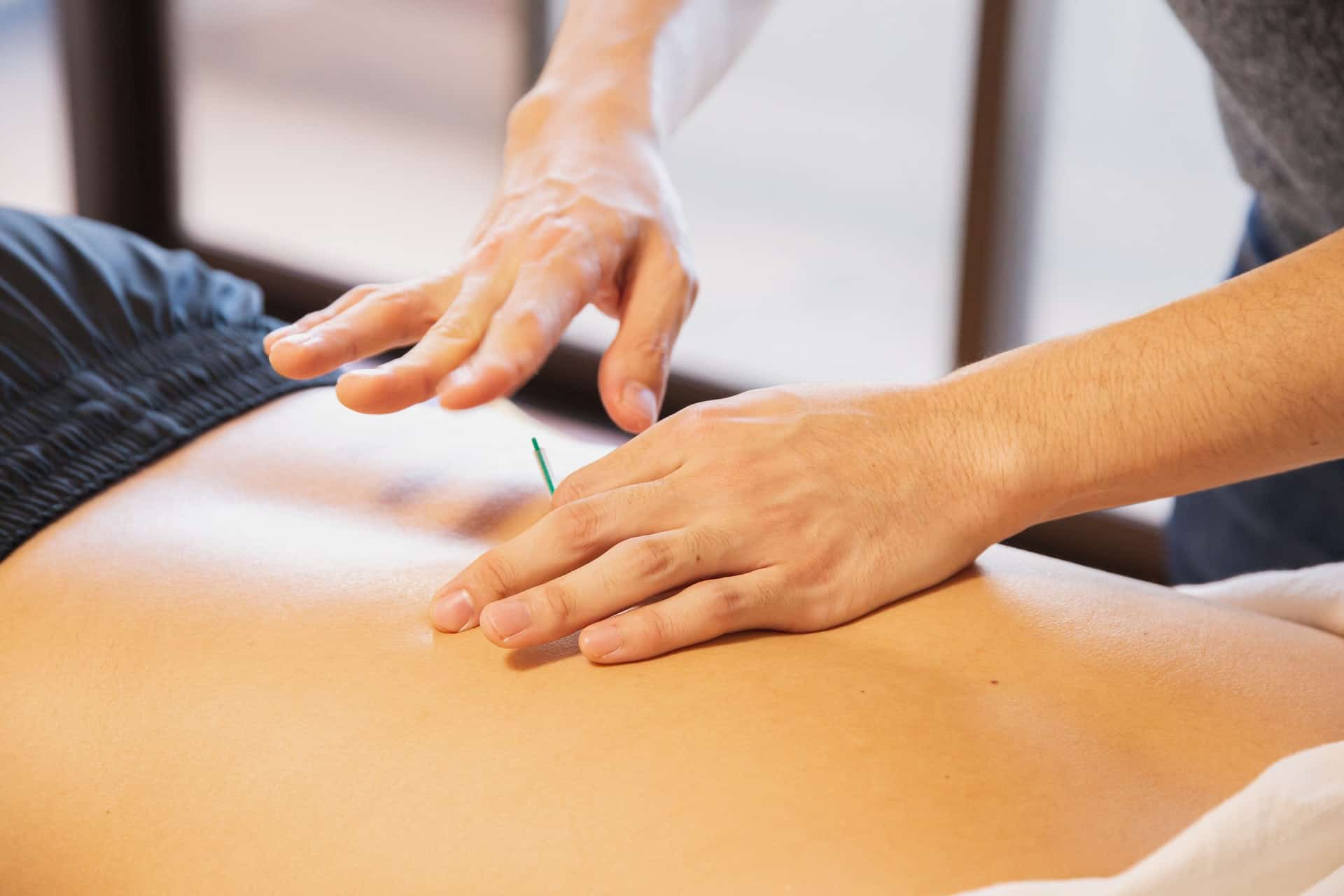Dry needling therapy uses thin, monofilament needles (similar to those used in acupuncture) to treat underlying muscular trigger points through the evaluation of pain patterns, posture, movement impairments, function, and orthopedic tests. Whereas acupuncture uses a more mild stimulation process based on channel theory to heal the body naturally, dry needling uses stronger stimulation of the muscles to get them to release tension. Furthermore, dry needling is used as a tool to affect pre- and post-assessment findings for functional and dysfunctional movement.
Essentially, a thin needle penetrates the skin without the injection of a fluid or other substance. It has been applied with great effect in sports medicine to help athletes recover from athletic-related injuries and provide pain relief. Dry needling is not a stand-alone therapy, and integrates well with Team ROI’s holistic approach to sports recovery and therapy.
How Does Dry Needle Therapy Promote Recovery?
Dry needling provides relief from and recovery for muscular pain by stimulating trigger points. These are tight bands in muscle fiber that are disruptive to muscle function. The application of trigger point dry needling reduces the excitability of the central nervous system, allowing for the release of muscle tension. When dry needling is applied to a muscle or trigger point, it can decrease banding or tightness and pain while increasing blood flow. Hard knots can be dissolved, alleviating muscular pain and stiffness.
Additionally, dry needling therapy has the ability to modulate the chemical mediators associated with pain and inflammation. It has been known to improve neurophysiological conditions by reducing trigger points located near sensory neurons around the brain and spinal region. In other words, dry needling can regulate the sensory neurons that detect and relay pain to your brain while providing relief to trigger point areas. It is an effective treatment for reducing pain intensity and increasing pain thresholds.
Dry needling therapy works best when combined with other recovery treatments. For instance, for subacromial pain syndrome (an injury that affects muscles of the ball-and-joint socket of the shoulder) dry needling combined with exercise was more effective than exercise alone for improving disability. It often is part of a broader physical therapy approach that incorporates other traditional physical therapy interventions.
What to Expect During a Dry Needling Therapy Session
Before the application of dry needling takes place, patients receive an explanation of what sensations to expect and the process of needling as it specifically relates to their injuries. This allows each athlete to gain a broader understanding of the discomforts associated with the needling process, including the role of neurophysiological, psychological, and environmental factors resulting from stimulating trigger point areas in the muscle tissue.
During a dry needling session, a trained clinician will identify a trigger point location. Then, the needle is inserted until a first local twitch response is obtained. This is determined when a brief and sudden contraction of the targeted trigger point occurs. Once a first local twitch response is obtained, the needle is moved up and down, with no rotations, to get more local twitch responses. As various trigger points are stimulated, the muscles respond to restore function to the affected areas.
Patients may experience temporary after-treatment soreness, fatigue, bruising, bleeding, infection, or pneumothorax after a dry needling session. However, the slight discomfort caused by the needling is temporary, and most patients usually recover from post-needling induced-pain/soreness between 48 and 72 hours after the intervention. Mentally prepared patients who know what to expect as part of the healing process are more likely to realize that the long-term benefits of dry needling far outweigh its minor, adverse side effects.
Our clinicians are adept in providing treatment modalities after the application of trigger point dry needling to reduce post-needling induced-pain. Following a treatment session, patients may receive instructions on postural education, activity modification, self-stretching, therapeutic exercises, or neuromotor re-training as part of a patient’s specialized treatment plan and to reduce down-time between intense athletic activity.
Who Performs Dry Needle Therapy?
Dry needle therapy requires professionals trained in advanced therapeutic techniques and knowledgeable in using specialized equipment that is complementary to recovery and healing. A doctor of physical therapy with continuing education in functional dry needling performs the treatment. Our clinicians are proficient in the carefully, sure-handed application of dry needling therapy, and are able to meet each patient’s recovery needs. A foundation in anatomy-based evaluations and familiarity with the patient’s clinical status allows for optimal recovery with maximized results.
Our staff of physiotherapists provide clients with a comprehensive recovery management program. They provide clients with expert feedback on the efficacy and efficiency of their recovery plan, while monitoring and tracking their progress. With our well-trained physiotherapy professionals, you can rest assured of a fast and optimal recovery process.
Why Team ROI
Customized plans for our patients that are integrated in approach ensure a speedy, progressive recovery process that focuses on the whole athlete. Dry needling is just one of the services available from our list of manual recovery services. In tandem with other treatments, our trained professionals use dry needling to ensure the speedy recovery of each athlete while reducing the chance of re-injury. Dry needling sessions start at $80 and integrate well with other complementary therapy treatments, all designed to help clients reach peak performance as part of an integrated approach.
Contact us by phone at 512.962.9141 or send us a message to find out how dry needling therapy can be holistically integrated as part of your total wellness recovery.

